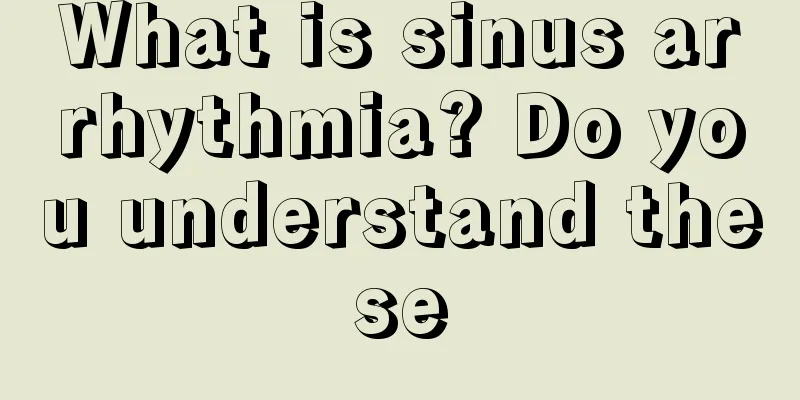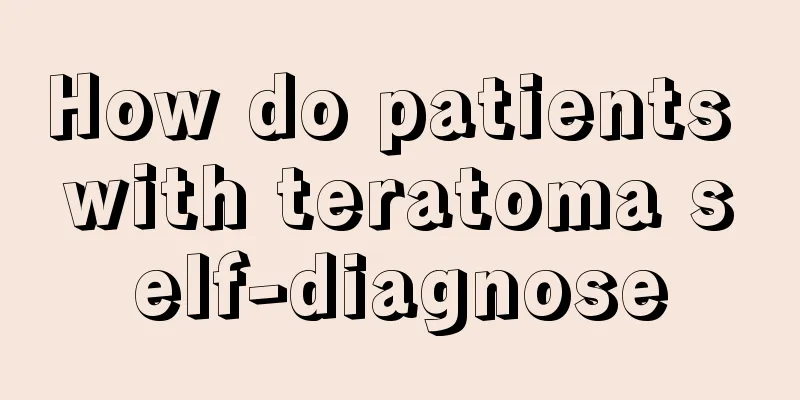What is sinus arrhythmia? Do you understand these

|
I believe many people know about sinus arrhythmia. Sinus arrhythmia is a heart disease that commonly occurs in young people. As living standards have improved a lot now, people’s irregular eating and rest habits will cause physical illness. Sinus arrhythmia can cause some other complications in the body. So what is sinus arrhythmia? 1. Causes It is more common in healthy children, especially in children over 3 years old and less common in infants and young children. It often occurs when the heart rate is slow or during sleep, and the heart rhythm can become regular when the heart rate increases or when exercising or awake. Drugs such as digitalis, morphine, and beta-blockers can cause arrhythmia. It can also be seen in children with organic heart disease. 2. Clinical manifestations Children's symptoms are milder than those of adults and they often lack complaints. Some older children may describe palpitations, chest tightness, and discomfort. Often detected by auscultation or electrocardiogram, sinus arrhythmia may be related to the respiratory cycle, which speeds up during inhalation and slows down during exhalation. Sinus arrhythmia was of no clinical significance. 3. ECG characteristics (1) Respiratory sinus arrhythmia sinus P wave; the arrhythmia is related to breathing, slowing down during exhalation, speeding up during inhalation, and the heart rhythm becomes regular when holding the breath; on the same lead, the PP interval differs by more than 0.12 seconds; (2) The symptoms of non-respiratory sinus arrhythmia are basically the same as those of respiratory sinus arrhythmia; the arrhythmia has nothing to do with the respiratory cycle. 4. Treatment Sinus arrhythmia does not require treatment, but symptomatic treatment is given if an underlying disorder is present. Classification Sinus arrhythmia is divided into sinus tachycardia, sinus bradycardia, sinus arrhythmia, sinus arrest and sick sinus syndrome. 1. Sinus tachycardia The normal sinus rhythm rate of an adult is >100 beats/minute, which is called sinus tachycardia. During sinus tachycardia, the PR interval, QRS and QT durations are shortened accordingly, sometimes accompanied by secondary mild ST segment depression and low T wave amplitude. It is common in situations such as exercise, mental stress, fever, hyperthyroidism, anemia, blood loss, myocarditis and the effects of adrenergic drugs. 2. Sinus bradycardia When the sinus rhythm rate is < 60 beats/minute, it is called sinus bradycardia. The heart rate of the elderly and athletes is relatively slow. Increased intracranial pressure, hypothyroidism or the use of beta-blockers can cause sinus bradycardia. Sinus bradycardia below 40 beats/min is less common. 3. Sinus arrhythmia The origin of sinus rhythm remains unchanged, but the rhythm is irregular, with PP interval differences >0.12s in the same lead. Sinus arrhythmia often exists simultaneously with sinus bradycardia. A more common type of arrhythmia is related to the respiratory cycle, called respiratory sinus arrhythmia, which is more common in adolescents and generally has no clinical significance. There are also some rarer sinus arrhythmias that are not related to breathing, such as (ventricular phase) sinus arrhythmia related to ventricular contraction and ejection of blood and wandering arrhythmia within the sinoatrial node. |
<<: What is sinus bradycardia?
>>: How is sinus bradycardia treated?
Recommend
Is the ground-glass nodule in the right lung lobe lung cancer?
Many patients believe that the symptoms of ground...
Thyroid ft3 is low
The changes in thyroid Ft3 and TSH must be observ...
What's the matter with thin and yellow hair
Thin and yellow hair is a problem that many peopl...
The difference between Narcissus, Cinnamon and Dahongpao
Dahongpao is a particularly famous tea in China. ...
When is the best time to soak your feet at night
Nowadays, people are under great pressure at work...
How to wash blood stains on clothes
How to wash blood stains on clothes? This is also...
How can I improve the drowsiness symptoms of liver cancer? Liver cancer patients can improve their drowsiness symptoms in this way
Liver cancer patients will experience a series of...
Why do my ears ring when I hiccup?
Hiccups are very common. Most people don’t take h...
Knowing more about the treatment precautions for esophageal cancer will help patients' condition
Now, the incidence of esophageal cancer has incre...
The efficacy and function of single-sided needle
The single-sided needle has the effects of promot...
What does tooth decay look like_What does tooth decay feel like
Children are curious about things they have never...
What are the harms of smoking to the brain
Everyone knows the dangers of smoking. Not only d...
Does colon cancer affect pregnancy?
Colon cancer is a common malignant tumor of the d...
What are the radiation-proof plants?
Nowadays, with many electronic products, radiatio...
How to provide good postoperative rehabilitation care for liver cancer? Guide to postoperative home care for liver cancer
The awareness of liver cancer in my country is pa...









